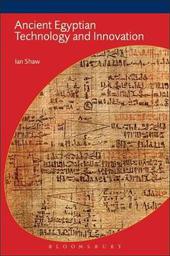
|
Ancient Egyptian Technology and Innovation
Paperback / softback
Main Details
| Title |
Ancient Egyptian Technology and Innovation
|
| Authors and Contributors |
By (author) Ian Shaw
|
| Series | BCP Egyptology |
|---|
| Physical Properties |
| Format:Paperback / softback | | Pages:216 | | Dimensions(mm): Height 234,Width 156 |
|
| Category/Genre | African history
History of engineering and technology |
|---|
| ISBN/Barcode |
9780715631188
|
| Classifications | Dewey:932 |
|---|
| Audience | | Undergraduate | | Postgraduate, Research & Scholarly | | Professional & Vocational | |
|---|
| Illustrations |
40 bw
|
|
Publishing Details |
| Publisher |
Bloomsbury Publishing PLC
|
| Imprint |
Bristol Classical Press
|
| Publication Date |
23 February 2012 |
| Publication Country |
United Kingdom
|
Description
This book examines the fundamental evidence for many different aspects of change and evolution in ancient Egyptian technology. It includes discussion of the wider cognitive and social contexts, such as the Egyptian propensity for mental creativity and innovation, and the pace of change in Egypt in comparison with other African, Mediterranean and Near Eastern states. This book draws not only on traditional archaeological and textual sources but also on the results of scientific analyses of ancient materials and on experimental and ethno-archaeological information. Case-studies analyse those aspects of Egyptian society that made it either predisposed or actively opposed to certain types of conservatism or innovation in material culture, such as the techniques of stone-working, medicine, mummification and monumental construction. The book also includes detailed discussion of the ways in which the practice and development of Egyptian technology interrelated with Late Bronze Age urban society as a whole, using the city at Amarna as a case-study.
Author Biography
Ian Shaw is Professor of Archaeology, University of Chester, UK. His books include Egyptology: A Very Short Introduction (2004) and Hatnub: Quarrying Travertine in Ancient Egypt (2008).
ReviewsThis is a readable and thought-provoking volume from which students and professional Egyptologists will benefit. The use of theory is welcome, but the main impact of the book is its continuation of the theme of establishing an "Egyptological" theory of materials and technology. -- Paul T. Nicholson, Cardiff University, UK * The Historian *
|